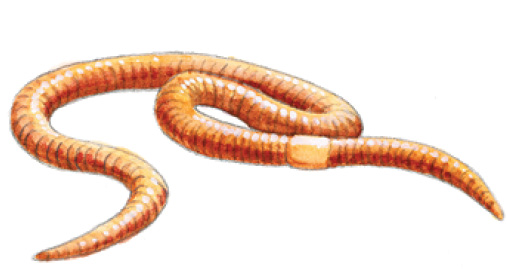
EARTHWORMS

Earthworms (many species)
Class: Oligochaeta (Earthworms)
Size: 1⁄2–14"
Habitat: Moist soils and compost; under logs and rocks
Range: Throughout North America
The class of earthworms consists of well over a thousand species, but they all share a similar body plan even if their size varies considerably. Essentially, they are like segmented tubes, tapered at both ends, with a mucus-covered skin (cuticle) and very simple internal organs and sensory apparatus. They make tunnels through soil by pushing aside the soil or by ingesting it and expelling the remains behind (one can see little piles of these remains, called castings, near a tunnel entrance). For grip, they are lined with tiny, tough bristles that stick to the soil, and wavelike contractions move the body forward. They are all very beneficial to soil health by increasing aeration and releasing partially digested organic matter that plant roots easily absorb. Earthworms reproduce by coupling together at an enlarged band (the clitellum) and produce small egg capsules. The Red Wriggler, Eisenia fetida, is illustrated.